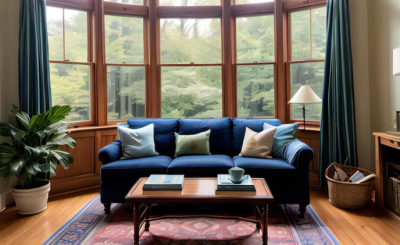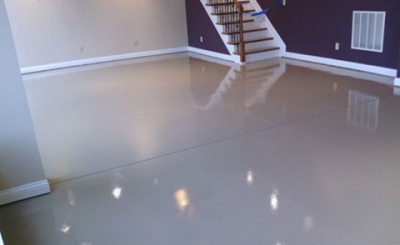Japanese woodblock prints, also known as ukiyo-e, are a cherished form of traditional art that flourished in Japan from the 17th to the 19th centuries. These exquisite prints are celebrated for their intricate designs, vibrant colors, and meticulous craftsmanship, capturing the beauty of nature, daily life, and cultural motifs of Japan. In this article, we will delve into the fascinating world of Japanese woodblock prints, exploring their history, techniques, prominent artists, and enduring legacy.
History of Japanese Woodblock Prints:
The origins of Japanese Woodblock Prints can be traced back to the early Edo period (1603-1868) when advances in woodblock printing techniques led to the development of ukiyo-e, or “pictures of the floating world.” Initially used for producing illustrations for books and religious texts, woodblock printing gradually evolved into an art form in its own right, depicting scenes of urban life, landscapes, kabuki actors, courtesans, and mythological themes.
The golden age of ukiyo-e occurred during the Edo period, particularly in the bustling city of Edo (modern-day Tokyo), where artists such as Hokusai, Hiroshige, and Utamaro produced some of the most iconic woodblock prints in history. These prints were widely popular among the merchant class, who enjoyed collecting and displaying them as affordable forms of entertainment and cultural expression.
Techniques of Japanese Woodblock Printing:
Japanese woodblock printing is a meticulous process that involves multiple steps, each requiring precision, skill, and attention to detail. The key techniques involved in creating woodblock prints include:
Design: The artist first creates a design, often using ink or watercolor, which is then transferred onto a sheet of thin, translucent paper called hanshita.
Carving: The design is then transferred onto a wooden block, typically made of cherry wood, and carved by skilled artisans using specialized carving tools. Each color in the design requires a separate block.
Printing: The carved blocks are inked and pressed onto paper, resulting in a print of the design. Multiple blocks are used for each print, with each block representing a different color or element of the composition.
Coloring: After the initial printing, the prints may be hand-colored by artisans using watercolor paints to enhance details and add vibrancy to the images.
Editioning: The final prints are typically numbered and signed by the artist, indicating the edition size and authenticity of the print.
Prominent Artists of Japanese Woodblock Prints:
Several artists have made significant contributions to the world of Japanese woodblock prints, leaving behind a rich legacy of masterpieces that continue to inspire and captivate audiences worldwide. Some of the most renowned artists include:
Katsushika Hokusai (1760-1849): Known for his iconic series “Thirty-Six Views of Mount Fuji,” Hokusai was a prolific artist whose innovative compositions and dynamic use of color and line revolutionized the art of ukiyo-e.
Utagawa Hiroshige (1797-1858): Hiroshige is celebrated for his evocative landscapes and poetic depictions of nature, particularly in his series “The Fifty-Three Stations of the Tōkaidō” and “One Hundred Famous Views of Edo.”
Kitagawa Utamaro (1753-1806): Utamaro specialized in bijinga, or “pictures of beautiful women,” capturing the grace and elegance of women in exquisite detail. His prints are renowned for their delicate lines and refined compositions.
Legacy of Japanese Woodblock Prints:
Japanese woodblock prints have left an indelible mark on the world of art, influencing countless artists, designers, and collectors across generations. Their enduring popularity can be attributed to their timeless beauty, technical mastery, and profound cultural significance.
In addition to their aesthetic appeal, Japanese woodblock prints provide valuable insights into the social, political, and artistic trends of the Edo period, offering a window into the rich tapestry of Japanese history and culture. Today, these prints are treasured as cherished works of art and revered as cultural treasures, ensuring that the legacy of ukiyo-e continues to thrive in the modern world.
Frequently Asked Questions (FAQs)
What are Japanese woodblock prints?
Japanese woodblock prints, also known as ukiyo-e, are a traditional form of printmaking that originated in Japan during the Edo period (17th-19th centuries). These prints are characterized by intricate designs, vibrant colors, and meticulous craftsmanship.
What subjects are typically depicted in Japanese woodblock prints?
Japanese woodblock prints often depict a wide range of subjects, including landscapes, nature scenes, kabuki actors, courtesans, historical events, spiritual wellness talk radio show, mythological themes, and everyday life in Japan during the Edo period.
How are Japanese woodblock prints made?
Japanese woodblock prints are made using a multi-step process that involves design, carving, printing, coloring, and editioning. The artist creates a design, which is then transferred onto wooden blocks and carved by skilled artisans. Each block represents a different color or element of the composition, and multiple blocks are used to create the final print.
Conclusion:
Japanese woodblock prints represent a pinnacle of artistic achievement, showcasing the skill, creativity, and cultural richness of Japan’s artistic heritage. Through their exquisite craftsmanship and captivating imagery, these prints continue to captivate audiences worldwide, transcending time and culture to inspire and delight generations of art enthusiasts. As we marvel at the beauty and intricacy of Japanese woodblock prints, we are reminded of the enduring power of art to transcend boundaries and connect us to the beauty of the human spirit.








